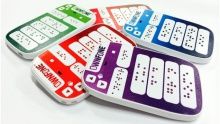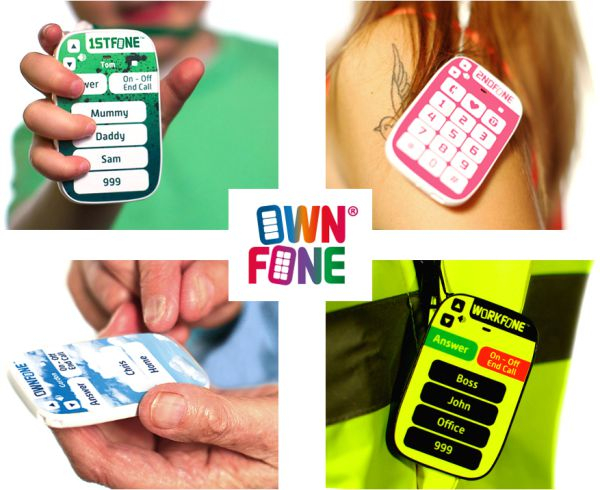Braille phone goes on sale in 'world first'

London-based firm OwnFone has released what it says is the world's first Braille phone.
The front and back of the phone is constructed using 3D printing techniques and can be customised.
Other companies have designed Braille phones in the past, but OwnFone says its device is the first of its kind to go on sale.
For those who can't read Braille, the company can print raised text on the keypad.
The phone, currently only available in the UK, retails for £60 and according to its inventor Tom Sunderland, 3D printing the front and back of the device helped to keep the costs down.
"3D printing... provides a fast and cost-effective way to create personalised Braille buttons," he says.
The device is designed to provide an instant connection between blind users and their friends and family.
Haptic touchscreen
In 2012, OwnFone launched what was one of the world's first partially 3D printed phones.
A year later, the company developed a special child-friendly version called 1stFone, a credit-card sized device with programmable buttons for crucial contacts.
OwnFone's new Braille phone is based on these previous two devices, keeping its small form factor and colourful design.
"The phone can be personalised with two or four Braille buttons which are pre-programmed to call friends, family, carers or the emergency services," Mr Sunderland told the BBC.

"This is the first phone to have a 3D printed keypad and for people that can't read Braille, we can print texture and raised text on the phone. Our 3D phone printing process is patent pending."
Those who wish to buy the phone can create a custom design on the company's website.
However, at £60 it's the most expensive of the three available options, with their previous models selling for £40 and £50.

While this may be the first Braille phone available to consumers, the idea is not an original one.
India-based start-up Kriyate built a prototype Braille-enabled smartphone in 2013, featuring a repressible Braille display and feedback controls (known as haptic touch) that beep or vibrate after receiving certain commands.
Some visually impaired users of mobile phones may not see the need for this device however, with features such as Apple's VoiceOver becoming more sophisticated.
VoiceOver is a "screenreader" that allows users to navigate their phone using gesture-based controls.
There are also a number of apps on both the Apple Store and Google Play that allow for an easier reading experience for the visually impaired.







